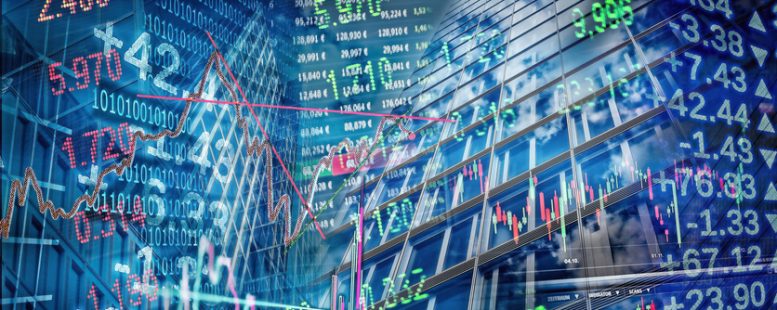Our Opinion: 2020
Reset for the recovery

Fears about the economic impact of coronavirus-induced lock-downs sparked a record-breaking sell-off in March. But global financial markets have since staged an equally record-breaking recovery, driven by monetary and fiscal stimulus, and re-opening economies.
Now is the time for investors to reset for the recovery. In a world more indebted, less global, and more digital, the key focuses for investors will be:
Finding income, Managing Volatility and Finding Winners & Avoiding Losers.
Equity markets entered “bear market” territory at their fastest pace ever, followed by the most rapid recovery on record. Markets dropped 34% between 19 February and 23 March on fears about the effect of coronavirus-induced lockdowns on the global economy. But extraordinary monetary and fiscal support, the lifting of lockdowns, and therapeutic drug developments have left global markets only 10% below their record highs.
Government bond yields fell sharply in response to lower interest rates and investor demand for safe havens, and remain far below prior levels. Yields to change materially from here, posing a challenge for investors looking to earn income and manage portfolio volatility.
After years of record-low equity market volatility, the VIX index jumped to a record high at the peak of the crisis in March. It has since fallen, but remains at elevated levels. Higher volatility will continue, and it will be a challenge for investors at a time when traditional portfolio hedges have such low yields.
Although equity markets overall are now close to prior highs, the crisis has driven significant divergence between markets and sectors. That trend of winners and losers will continue as the recovery evolves.
To stimulate the recovery, central banks have cut interest rates to, or below, zero, and embarked on unprecedented quantitative easing programs. The challenge of finding income is made even more pressing because central banks may be willing to allow for a period of moderately higher inflation (for example 2% to 5%) in order to manage debt burdens. In short, it means cash and the safest bonds are likely to deliver negative real returns for the foreseeable future.
To protect purchasing power, investors will need to question if they are holding more cash and safe bonds than is necessary. They should set aside two to five years’ worth of net expenses in cash and high-quality bonds, in addition to reserving some safe borrowing capacity to provide for cash flow needs in the event of a worst-case bear market event. This provides a ‘buffer’ to allow the remainder of the portfolio to be invested for growth over the medium- and long-term.
Investors will also need to seek income from dividends and higher-yielding credits. But if investors need to accept taking more risk in order to earn income, the value of diversification and careful portfolio management is heightened. Any individual credit issuer could be at greater risk in a post-COVID-19 world and the crisis has already seen traditionally high-dividend-yield companies cutting payouts. Investors could choose to delegate decision-making on these topics to a professional manager.
In the context of a well-diversified portfolio, attractive alternative sources of yield include private markets, select real estate, senior loans, and bank capital, or, in the sustainability space, green bonds.
Volatility hit a record peak in March and remains far above pre-crisis lows. Investors will need to think carefully about how to manage such volatility. A key long-term cost of elevated volatility is that it can trigger indecision and leave investors stuck in ‘safe’ but low-yielding assets for extended periods. But volatility can also present opportunities provided investors act with discipline.
A disciplined approach to portfolio rebalancing can allow investors to benefit during periods of volatility by aiming to ‘buy low and sell high’ in a systematic way. Rebalancing at the end of the first quarter in 2020, when stocks sold off and bonds rallied, would have enabled investors to participate more strongly in the recent stock market rebound, for example. It’s worth noting that rebalancing at the height of a crisis can be psychologically challenging, so delegating or automating decision making on rebalancing can be an effective way of maintaining discipline.
Periods of volatility can also be good opportunities for investors to build up long-term positions. However, it can be unnerving to invest during volatile times because investors fear ‘regret’ if they buy and the market subsequently falls. One way of overcoming this is to commit to a phasing-in strategy based on time or price, for example using dollar cost averaging.
The coronavirus crisis has created winners and losers. Some sectors, such as e-commerce and fintech have benefited. Others, such as travel and leisure, have experienced acute pain. This trend of relative winners and losers will continue as the recovery evolves.
Stocks and bonds exposed to the sustainable investing trend have outperformed year-to-date, and they remain well positioned to be winners in a post-COVID world. By replacing traditional asset classes with sustainable asset classes, investors can improve the quality of their portfolios while also exposing themselves to enduring longer-term themes. Companies that can play a role in the low carbon energy transition such as renewable energy, agricultural yield, water, and clean air and carbon reduction should be well supported by evolving regulation, government stimulus, and increased funding from sustainability-minded investors in the years to come.
6th July 2020
